Grand (lil’) ole opry
From movie house to music hall, Millington’s Strand lives on.
By Preston Lauterbach
If Millington’s Justin Timberlake can claim Memphis, then I’m sure no one will object if we adopt one of Millington’s musical gems as our own.
The first time I encountered the Strand Music Hall, while driving and gawking around downtown Millington, I stopped the car and pulled up behind the building for a closer look. In so doing, I nearly smashed a wet, mangy cat.
Certain strains of folklore bestow powerful symbolic value upon cats: Ancient Egyptians revered them, superstitious westerners avoid crossing paths with black ones, and gamblers of yore carried their bones for good luck. This cat scowled up at me, hissing, and I realized how I’d gotten so close — not only was it dirty and matted, but the thing only had one eye. Seems I veered suddenly toward its blind side. After the narrow escape and the hiss, the cat sprinted to the building and wiggled through a fist-sized hole into the sanctuary of the Strand.
The builders of the Strand envisioned a movie house and completed it in 1941. But for the past 30 years, the Strand has served our neighbors to the north as a music hall. Friday night showcases the Lord’s songs in the form of Sun and Stax pianist Jerry Lee “Smoochy” Smith and his partner Charlie May, collectively known as the Lo-Note Duo. Saturday belongs to Billy Owen’s All American Band and some other Millington honky-tonkers.
Aspirants to the bright lights of Saturday night can try out for an opportunity to play with Billy at the Strand on Thursday evenings at 6 p.m. He may authorize you to sing a number, but don’t think you’re dodging the $5 admission. The band plays on behind 30 or more guest vocalists, singing everything from 1950s classic country to platinum Nashville. Be forewarned: Anyone hoping to mix a little white lightnin’ with their music will need to smuggle it in their bloodstream.
Though the entertainment has changed from movies to music, the seats remain the same from the days when Millingtonians piled into the Strand to see Abbott and Costello Join the Navy. The patriotic décor is another holdover from a bygone era. A whitewashed dance floor leads up to plush red carpet that spills over the edge of the stage. A grand ole flag and red and white bunting adorn the space where the movie screen once hung.
On stage, the house band includes a fine steel guitarist to complement the drums, bass, tambourine, and lead and rhythm guitars. In the crowd, you’ll see plenty of cowboy hats. Line dancers — they practice and give lessons on Thursday night — glide around the dance floor and step in unison. I noticed only one couple under 40 on a recent visit, subsequent to the run-in with the one-eyed tomcat.

The guest singers range in quality. The audience’s tolerance of said singers also varies. Each vocalist has a two-song allotment, and attendees receive a schedule for the night in exchange for slipping a fiver through the ticket window. Cliff Simmons took the stage in the slot just before crowd favorite Cynthia McBroom and declared without a hint of sarcasm, “I always like opening up for Cynthia.”
A lady seated nearby informed me, “It don’t matter; he’s no good anyway.”
It’s 211 miles from this lil’ ole opry to the Grand one, but some of the artists are closer to Nashville than others. McBroom followed with renditions of Patsy Cline’s “I Fall To Pieces” and the Larry Gatlin-penned standard “Bigger They Are, Harder They Fall,” which made the line dancers sway and the crowd cheer.
Other performers on the program may or may not carry stage names (Colt Younger, Jesse James Dean). It’s anyone’s guess. In the end it’s not about star time, though. The Strand is a place where a 14-year-old girl in a cowboy hat can creak through “Strawberry Wine,” and a one-eyed cat can take cover.
Grand illusions
A look at some astonishing Memphis developments that never quite made it off the drawing board.
By Michael Finger
It took the Flyer almost 20 years to produce this, our 1,000th weekly issue. By the time we crank out issue number 2,000, Memphis as we know it may be unrecognizable. At the moment, developers and promoters are still presenting grand schemes for many of our city’s landmarks: The Pyramid, Beale Street Landing, Liberty Bowl Memorial Stadium, the Mid-South Coliseum, the old Mid-South Fairgrounds site, and Shelby Farms.
It remains to be seen how many of these plans remain forever on the drawing boards. Not to be too pessimistic about it, but it might be instructive to look back at a few other grand illusions in our city’s past.
Memphis, it seems, always needs a facelift. Back in 1924, the city hired the national planning firm of Harland Bartholomew & Associates to redesign the entire waterfront. The firm presented “an ambitious scheme” that would transform the cobblestoned area from Poplar to what is now the South Bluffs into a stunning Greek Revival promenade, with graceful bridges carrying pedestrians to Mud Island, which — in these plans — has been transformed from a barren sandbar into a public park with baseball diamonds and tennis courts. Bartholomew declared, “No immediate steps are necessary” to create this vision. And so none were taken. We never followed one page of this plan.
But we tried again in 1955, with the same firm, in fact. This time, Bartholomew and company reminded us that the riverfront “still presents a challenging opportunity.” They met that challenge with a design right out of the Jetsons: a helicopter terminal and landing field on Mud Island, which, by the way, would no longer be an island since the Wolf River Channel would be completely diverted around it. The newly available land would include playing fields, a riverside stadium, parking for 5,000 cars, and an expressway running the length of the development. And again, we ignored this plan.
 Preston Lauterbach
Preston Lauterbach
Other developers focused on other areas. In 1960, planners unveiled a new downtown center “for cultural life in Memphis, as well as a center of governmental activities.” Plans included a new city hall, police station, and “restaurant pavilion.” Soaring over everything was a dramatic structure — a 500-foot obelisk called the DeSoto Memorial Tower. The Memphis Press-Scimitar called this whole scheme “one of the most ambitious projects Memphis has ever undertaken.” Apparently too ambitious. We did build a new city hall, but the other components of the plan were scrapped.
In the late 1960s, developers announced the Beale Street Tourist Plaza, centered around Beale and Second. A 15-story tower would house a 200-room Holiday Inn, which would be the centerpiece of a massive urban renewal plan that would include a “harbor beacon,” along with a marina, enclosed shopping mall, and a “blue light entertainment district.”
As usual, none of these things happened — at the time. Some 40 years later, that area would include Beale Street, Peabody Place, FedExForum, and other attractions.
Other planners focused their attention away from downtown. The Mid-South Fairgrounds, then and now, attracted some interesting ideas — none more bizarre than the scheme proposed in the late 1960s to enshroud the entire complex in a transparent dome. It wouldn’t be hard plastic but an acrylic tent suspended by a network of poles and wires. Just why the fairgrounds needed a dome was never clearly explained, but a walkway would allow brave pedestrians to walk across the top of the whole thing. Showing a rare instance of common sense, city leaders were skeptical, asking the developer if the fragile-looking tent would withstand a severe storm. “This will stand up to a hurricane,” they were assured. Somebody pointed out that Memphis rarely endured hurricanes but might suffer a tornado or two: Will the Fairgrounds Dome withstand a tornado? “Uh, no” was the answer, and that was the end of that.
There also have been plenty of grand schemes for the suburbs. One of the most unusual was a proposed development called Country Club Estates, which the Press-Scimitar called “a design for living.” Modeled after a futuristic community that was actually built in Radford, New Jersey, in the 1950s, this neighborhood would cluster small homes (“contemporary architecture of the Nth degree”) around a network of more than 100 coves. Tunnels would allow pedestrians to walk beneath the major streets to their own school, shopping center, lake, swimming pool, and baseball fields.
But it never happened. The local planning commission fretted about all the tiny houses on tiny lots and declared, “This type of home will be slums in a few years.” Developers eventually constructed only one part of the original plan — Sea Isle Elementary School — but the East Memphis neighborhood that is today embraced by White Station, Quince, Sea Isle, and Estate doesn’t look anything like a “development of the future.”
And let us never, ever forget Rakapolis, the Sidney Shlenker-inspired project that would have combined Mud Island and The Great American Pyramid (as it was supposed to be called) into a surrealistic Egyptian-style theme park focusing on American music. “Inclinator” rides at The Pyramid would carry thousands of visitors each year to the Rock-and-Roll Hall of Fame, located in the apex of the building. Meanwhile, over on Mud Island, visitors would board replicas of ancient Nile River barges, enter an underground passage through the mouth of a trumpet, and drift past displays focusing on American performers. The ride would end in front of a giant jukebox, which — by pressing a button — would play the hit songs of any year. No, we are not making this up. Rakapolis. Remember it.
Over the years, many of our city’s most extravagant pipe dreams have turned to smoke. It remains to be seen which of the grand schemes presented today ever get off the drawing boards.
Grand Plans
What could you do with $1,000?
By Mary Cashiola
The dollar may not go very far these days, but what about 1,000 of them? In honor of the Flyer’s 1,000th issue, here’s a list of what you could buy in Memphis if you had a spare grand.
— 10 shares of FedEx stock (at $95.09 a share).
— 35 shares of International Paper (at $28.50 a share).
— 200 Sonic Saver Seat tickets to a Grizzlies game (or five fifth-row tickets).

— 1,000 rides on the downtown trolley (2,000 if you only ride during lunchtime — 11 a.m to 1:30 p.m.).
— 15 three-day Memphis in May Beale Street Music Fest tickets (with $47.50 left over) purchased before April 30th; 12 three-day passes purchased after April 30th (with $10 left over).
— 338 small bottles of Memphis Mary Bloody Mary mix.
— One-day rental of the Memphis Botanic Garden’s Lakefront Pavilion for you and 599 guests (base price $400, plus $1 per person).
— 37 adult tickets for the Graceland Mansion tour with $1 left over.
— As many Flyers as you can carry — or “borrow” — off our loading dock.
— 0.00000032258 of Northwest Airlines (based on Delta’s $3.1 billion merger with the carrier).
— Small down-payment on Kathryn Bowers, former state senator. As part of operation Tennessee Waltz, Bowers pled guilty to accepting $11,500 in bribes.
— 66 Flying Saucer “Guess How Many Beers It Took To Build This?” XXX T-shirts (with $10 left over for a pint).
— 100 “$50 Million Cash Spectacular” lottery tickets.
— A four-year-and-five-month subscription to The Commercial Appeal, with almost $10 left.
— 58 full orders of the Rendezvous’ charcoal-broiled pork ribs. (72 if you get small orders.) Just don’t forget to tip.
— 10 “Taste of Summer” Redbirds ticket packages, with tickets to 10 games each.
— 51 one-pound boxes of Dinstuhl’s chocolate-covered strawberries (with $5.50 left over).
— A three-night stay in one of The Peabody’s deluxe guest rooms, with $115 to spend in the lobby gift shops.
— 40 dozen fertile mallard eggs from ducksandeggs.com, without shipping.
— Nine vehicle registration renewals, if you live inside the city of Memphis.
— 299 gallons of regular gas, at $3.34 a gallon. If you get 25 miles to the gallon, you can go 7,475 miles, or from Memphis to Juneau and back.
— 50 copies of Ask Vance, the best questions and answers from Memphis magazine’s local history and trivia expert.
— 76 adult double-feature tickets to the Pink Palace’s CTI IMAX Theater (or 125 adult single-show tickets).
— Seven weeks of canoe rental (or seven canoe rentals for one week) from Outdoors, Inc. (Includes the $300 deposit, because, quite frankly, we’re not sure we can trust you.)
In the Grand Scheme of Things
Flyer stories on dead issues.
By Bianca Phillips
Each week, the Flyer‘s dogged editorial staff whiles away hours at meetings and press conferences in an effort to glean meaningful new angles on the hot topics of the day.
Some of those hot topics, like Tennessee Waltz, will have effects for years to come. Other issues build up a media storm, only to fade away with the rise of the next big controversy. And some stories bow out of the limelight when resolutions are reached.
In the past 1,000 issues, Flyer staffers have written plenty of words about issues that, quite frankly, just don’t matter in the grand scheme of things:
“The Girls Next Door” by Kate Leneham (July 1989)
Although the city government and the private sector had poured money into rejuvenating South Main in the mid-’80s, Leneham’s story highlights the street’s age-old prostitution problem, which just wouldn’t go away.
 Tonya Thompson | dreamstime.com
Tonya Thompson | dreamstime.com
Leneham writes: “Directly across the street from one of the area’s oldest businesses, the Arcade Restaurant, another of the area’s oldest businesses seems to still flourish: A woman in tight high-cut shorts, a long black wig, halter top, and high heels waves at cars as they pass, offering the drivers a good time for a price.”
The only prostitutes on South Main these days are likely to be depicted on canvas at a Trolley Night art show.
“Central Station Approaches the End of the Line” by Sam Evan Young (January 1990)
South Main’s Central Station was facing the possibility of abandonment as Amtrak made plans to move its station to Mud Island.
Young writes: “The aging building has seen brighter days. Now, the only light inside the terminal comes from a few rays of sun that manage to peek through the dirty, dingy windows, revealing walls with cracked and chipping paint.”
Thankfully, Amtrak stayed put, and the Memphis Area Transit Authority revamped the historic train station. Today, it serves as a lush banquet hall for private parties and is home to loft apartments, the Amtrak station, the Memphis Police South Main Precinct, and the downtown Farmers Market.
“Are Four New Teams in the Cards for the NFL?” by John Branston (September 1993)
Writes Branston: “The latest NFL rumor making the rounds is that the league’s owners could decide to expand by four teams instead of two. … Under this scenario, Memphis and Baltimore would be awarded franchises in October and start play in 1995.”
Fast-forward 15 years: The city recently fought over whether or not to build a new stadium, not for its NFL team but for the University of Memphis football team. The city did become home to an NBA team, but that rumored NFL team was awarded to Nashville in 1998.
“Ellis, Tigrett Propose Joint Music Museum” by Mark Jordan (November 1995)
Bert Ellis, head of WMC’s parent company Ellis Communications, and fashion designer/Blues Ball maven Pat Kerr Tigrett were in talks with the Smithsonian Institution to jointly develop a music museum inside The Pyramid.
Writes Jordan: “The Ellis/Tigrett proposal calls for installing a music museum similar to the Rock-and-Roll Hall of Fame, which recently opened in Cleveland.”
While Memphis eventually did gain a Smithsonian music museum, the Rock ‘n’ Soul Museum is housed in a more viable structure: FedExForum. Meanwhile, The Pyramid sits dark and empty.
“Residents Losing Fight Against Bluffwalk” by Jacqueline Marino (August 1998)
In 1998, a group of downtowners adamantly opposed the construction of a sidewalk along the South End river bluffs stretching from Beale Street to Martyr’s Park.
Writes Marino: “Bluff residents have objected to the walk being notched underneath their property because they believe it will destabilize the bluff and possibly cause damage to their homes.”
Despite their protests, the Bluffwalk was built anyway. These days, the walk is as much a part of downtown as the trolleys, and there are few if any complaints.
“Free Art Tomorrow” by Bianca Phillips (April 2003)
Though downtown is home to the city’s thriving art scene, artists likely cannot afford to live in the area’s upscale condos. But in 2003, a group of local art advocates had a plan to turn the century-old Tennessee Brewery into a residence for artists.
Writes Phillips: “[ArtBrew] wants to turn it into an affordable living/work space for artists, complete with performance and exhibition space, ‘arts-friendly’ commercial and retail space, and arts education and outreach programs for the community.”
But like the beer that was once produced in the historic building, that idea eventually went flat. The ArtBrew organization no longer exists, the brewery is still empty, and downtown housing remains too pricey for many artists.
“Monumental Battle” by Pamela Denney (August 2005)
A few years back, the Rev. Al Sharpton delivered a speech in Memphis supporting a Center City Commission proposal to rename some public parks. In regard to the names of Forrest Park, Jefferson Davis Park, and Confederate Park, Sharpton proclaimed: “We need to show the rest of the world that the day for honoring people like this is over.”
Denney writes: “Protests by some Memphians started almost immediately. A group called Save Our Parks staged a rally near the Forrest monument at evening rush hour. While some protesters waved signs at passing traffic, others used their own lawn equipment to cut the park’s overgrown grass.”
Though the name-change campaign fizzled out, the protesters triumphed by default. All three parks retain their original names.
Grand Guignol
“The Memphis Tigers Show”: the bloody climax.
By Greg Akers
Grand Guignol: a dramatic entertainment featuring the gruesome or the horrifying, often with a grisly climax; named after the Paris theater that created the genre.
Was there any spectacle this year greater than “The Memphis Tigers Show”? From start to finish, it was grand drama that produced nothing but nails-in-the-stomach gloriousness. The entirety of the exhibition and how it affected Memphis daily can’t be traded for anything. Well, maybe one thing.
Under the generalship of Coach John Calipari, since 2000, the University of Memphis men’s basketball program has been resurging, especially coming on the heels of the dead-ball era under previous coach Tic Price.
Heading into the 2007-’08 season, the Tigers were boasting two straight Elite Eight finishes, one of the top-rated prospects in the country in incoming freshman Derrick Rose, the return of stud veterans Chris Douglas-Roberts and Joey Dorsey, and national critical acknowledgement with a preseason consensus top-5 ranking.
In other words, the mood among fans leading into the season was va te faire foutre, Memphis haters, because here we come. Pardon my French.
Grand Guignol Fun Fact: The theater was the smallest in Paris. The lurid plots may have initially been compensation for the building’s size, and the intimacy of the house no doubt exacerbated the emotional impact on the audience.
Is there any coach in America better suited than Calipari to direct the city team in “The Memphis Tigers Show”? Consider: a chip on the shoulder that’s kinda earned, paranoid, something of a Napoleon complex, desperate for validation … and the same could be said for the city of Memphis.
The only thing that matched the excitement around the Tigers this season was the expectation. With a tough but favorable schedule and players who were as good as advertised, talk churned around a possible undefeated season and how anything less than a Final Four would be a disappointment.
The city simmered in Tiger stew, every win another 10 degrees hotter on the stovetop.
The city needed a win to prove to all those sports folks on the East Coast, the West Coast, the SEC, the Big East, Chapel Hill, Bloomington, and everywhere else that the Tigers deserved respect. The Conference USA millstone is never going to save the Tigers’ neck, so our men in blue were going to have to overcome the odds.
And there’s no denying that, for many, “The Memphis Tigers Show” this season was just a stand-in for the whole city’s prospects. Right or wrong — okay, wrong — a Tiger championship was the promise of civic respect from every other community in America that had at least one thing go right for them in the history of their existence.
Foreshadowing: As reported in The Commercial Appeal on December 12, 2007, after the Tigers went 7-18 from the free-throw line against Southern Cal:
Calipari: “I’m not concerned, I’ll be honest. With four minutes to go, this is a gut-it-out team. We’ll make the free throws; we’ll have the right guys with their hands on it. My mindset is they’ll make the ones they have to make.”
Sophomore guard Doneal Mack: “Our team, we’re used to it. We know we’re going to miss free throws. And we know we’re going to hit some in the clutch.”
Sophomore guard Willie Kemp: “We know we’re better than that, but when it all comes down to it, we’re going to make it. At the end of the game, we’re going to make our free throws. If it’s a close game, it don’t matter who goes up there to shoot the free throws. We’re making them. We don’t worry about it at all.”
Grand Guignol Fun Fact: A program’s slate of performances at the theater would often alternate between comedy and horror, to heighten the effect of the gruesome.
Going into the tournament, the Tigers shot 59.6 percent from the free-throw line, third to last in the entire country. It was said to be the team’s one Achilles heel, something that would catch up with them eventually.
In the Sweet Sixteen against Michigan State, the Elite Eight against Texas, and Final Four game against UCLA, the Tigers destroyed the notion. Against MSU, the Tigers made 74.3 percent from the free-throw line. Against Texas, the Tigers were even hotter, shooting 83.3 percent. Against UCLA: a blistering 87 percent!
Tiger nation rejoiced. The Final Four wall had been scaled! And free-throw shooting was even becoming a team strength. Calipari was right all along: The Tigers would make them when they mattered the most.
Grand Guignol Fun Fact: Among bloody climaxes acted out at the theater were characters being decapitated, stabbed, scalped, disemboweled, driven insane, raped, poisoned, and eaten by wild animals.
The national championship game against the Kansas Jayhawks: the pinnacle of the college basketball season, with all eyes on “The Memphis Tigers Show.” It was the ultimate chance to gain respect and validation.
Memphis was up by nine points with 2:12 left to play in the game. The championship was theirs. Then:
Kansas hits a shot, steals the ball, and hits a three-pointer. Dorsey fouls out. The Tigers miss four of five free throws in the last 1:15. Douglas-Roberts misses three of three during the stretch, and Rose misses one of two with 10.8 seconds to go — if he hits that other one, Memphis’ lead is all but insurmountable. Instead, Kansas runs down and hits a three with 2.1 seconds left to tie it.
In overtime, Kansas forward Darrell Arthur turns into a zombie and gnaws off Robert Dozier’s arm. Jayhawk guard Mario Chalmers rips out Rose’s gall bladder and alley-oops it to Brandon Rush for a tomahawk jam. Kansas coach Bill Self cuts open Calipari’s rib cage, removes his heart, and replaces it with a ticking time bomb, sews him back up, laughs when Cal explodes, and uses a court mop to clean up the mess.
Or something like that.
Is there a doctor in the house? “The Memphis Tigers Show” 2007-’08 was a helluva ride. New cast member Tyreke Evans looks awesome.
Can’t wait to see what happens next season.




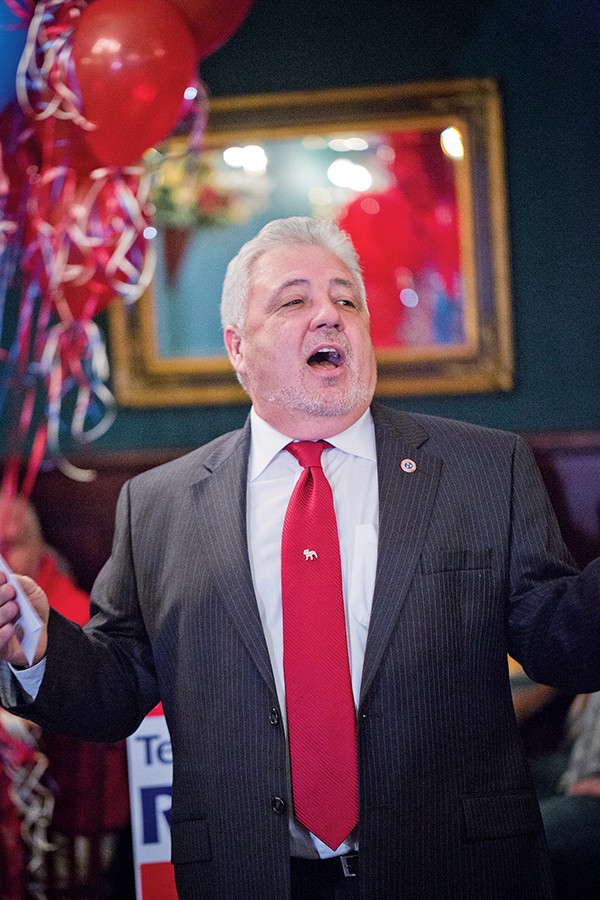

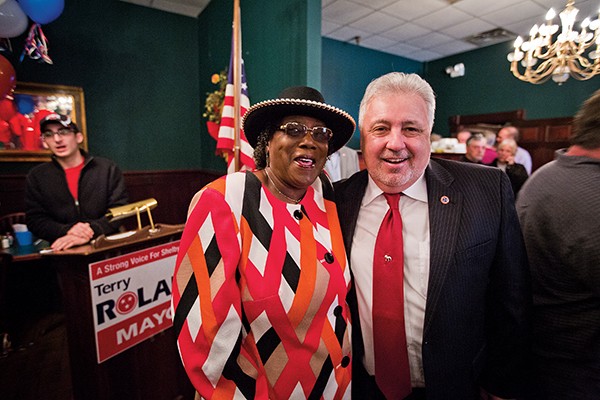
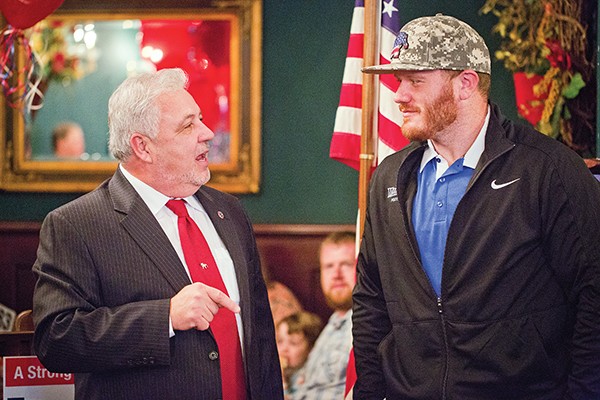
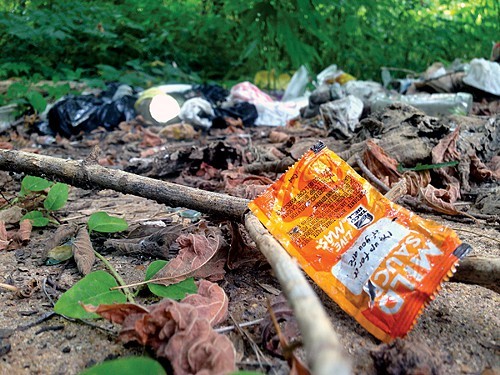


 Preston Lauterbach
Preston Lauterbach 
 Tonya Thompson | dreamstime.com
Tonya Thompson | dreamstime.com 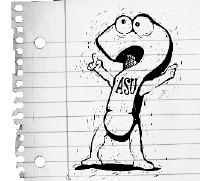 Greg Cravens
Greg Cravens